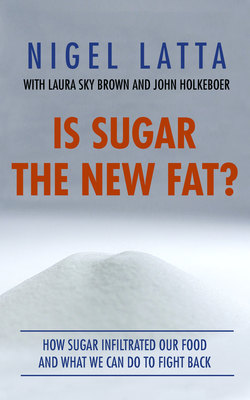Читать книгу Is Sugar The New Fat? - Найджел Латта - Страница 7
На сайте Литреса книга снята с продажи.
ОглавлениеThe Hard Stuff
If this is true, why don’t people make the connection between sugar and disease? Dr. Lustig’s point of view is that people have been sold a bill of goods for the past 40 years about the effects of sugar, a product that, he says, has been designed specifically to make money for the food industry while hurting the people who consume it.
It’s time to change the paradigm, Dr. Lustig says. Is he right?
Well, something’s got to change, considering that in my home country of New Zealand, nearly 65 percent of adults and 33 percent of children are now clinically overweight or obese. In the United States, the Centers for Disease Control and Prevention’s National Center for Health Statistics says that, as of 2014, more than 70 percent of adults are overweight or obese, and 17 percent of children and teenagers are clinically obese.
And as I look around, I’m wondering how much is sugar implicated in all of this.
Dr. Lustig notes that if you ask the question, how much sugar does my body need? the answer is zero. “There are no biological processes that require dietary sugar,” he says. “Your liver has a capacity to metabolize a finite amount. A little is okay; a lot is not. When you overwhelm your liver’s capacity to metabolize it, you get in trouble. And that’s where we are now.”
He reckons this is because sugar is being slipped into everyday food without our knowing it.
This has me thinking: How much sugar is in the food that we normally buy? I went to a regular supermarket to have a look.
Some of the stuff is obvious. Your chocolatey, nutty Nutella spread has two teaspoons of sugar. That’s something you’d expect. But I wouldn’t expect Marmite, a non-sweet spread that is popular in New Zealand, would have any sugar in it. In fact, it has 28 grams in one small container, or seven teaspoons of sugar. Tomato Catsup has just over a teaspoon of sugar per squirt. Mayonnaise—the light kind with the Heart Foundation checkmark on it—for every squirt onto your plate, there’s a teaspoon and a half of sugar!
I like tuna. I was surprised to learn that a can I picked up at the supermarket contained almost a teaspoon of sugar per serving. The old family favorite, baked beans? Per serving, there’s almost four teaspoons of sugar!
I expect loads of added sugar in fizzy drinks, but it came as a surprise to find out fruit juice is packed with it as well. Sugar occurs naturally in fruit, which is good. But when it’s juiced, you get seriously concentrated sugars. It seems there’s no escaping the stuff.
What’s becoming really clear to me as I scrutinize all the food I would normally buy is not so much that sugar is hidden, but that it’s hidden in plain sight. It’s in almost everything. Without knowing it, I’ve actually ended up eating quite a lot of sugar without really even thinking about it.
Which got me wondering: Why is sugar in just about everything? And who decides how much?
